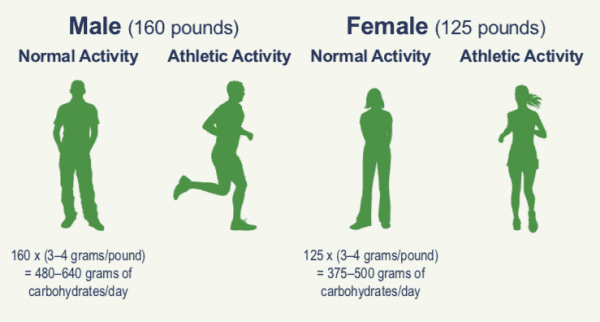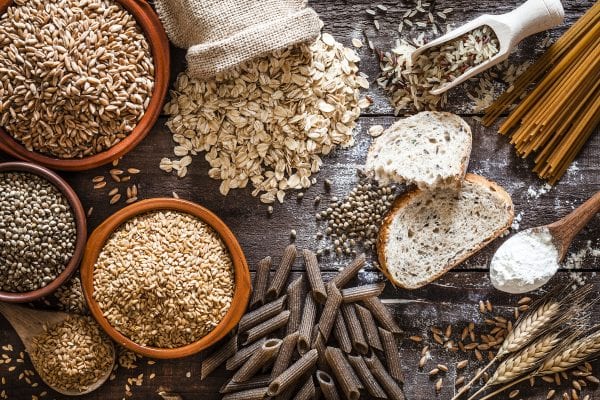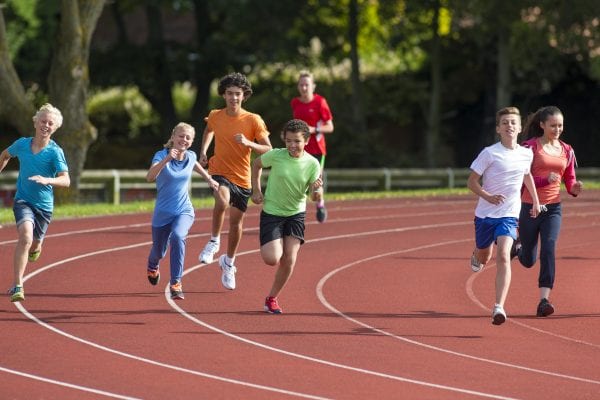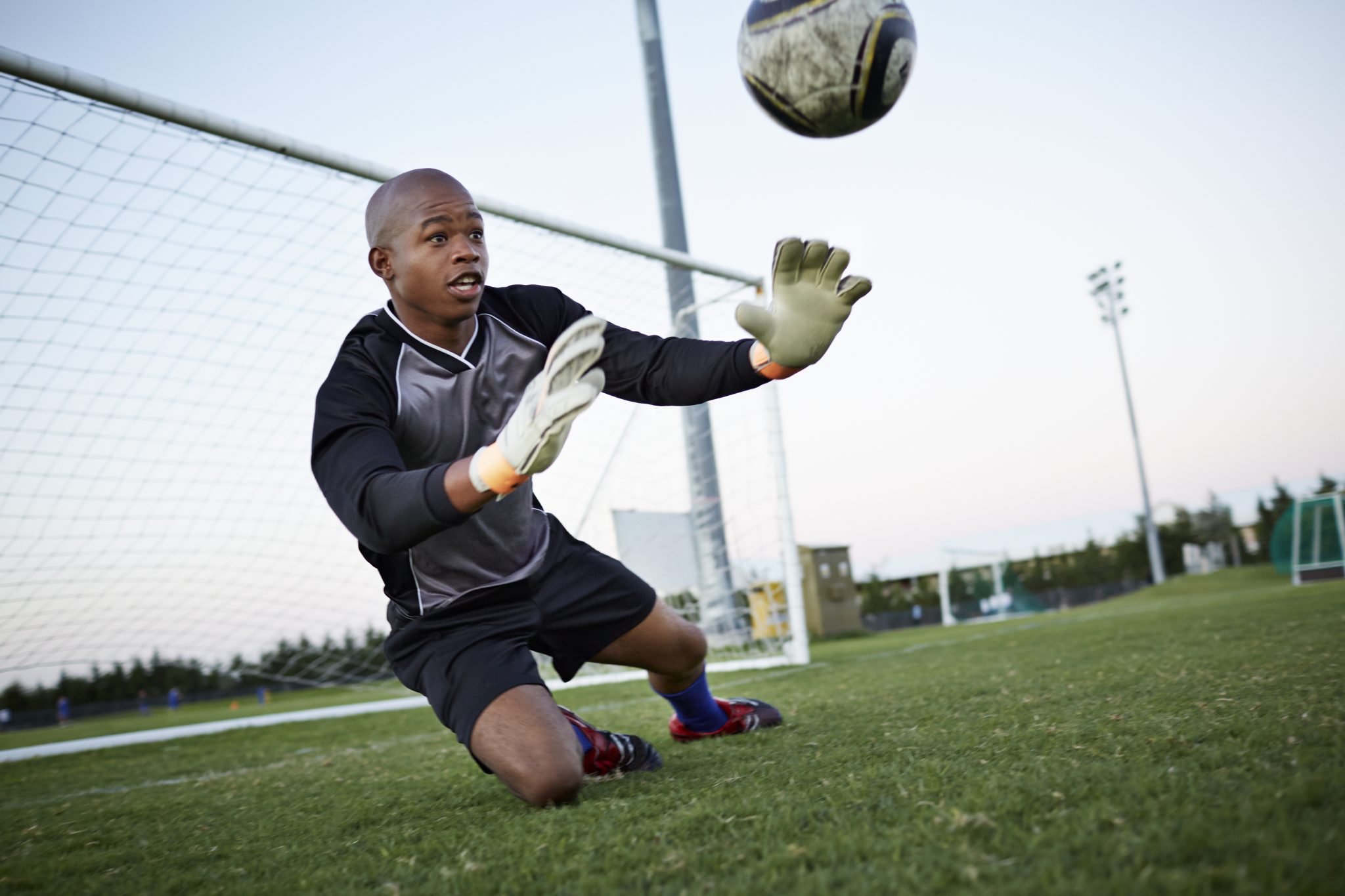Home & Family

Carbohydrates are a major fuel source for exercising muscles. If these muscles do not have enough carbohydrates, performance will decrease.
Carbohydrates are chemical compounds containing carbon, hydrogen, and oxygen. Starches (bread, rice, etc.) and sugars are the major types of carbohydrates found in our diets. While carbohydrates have a variety of specialized functions in the body, their major function is as a source of energy (4 calories/gram) for various body organs and tissue. This is especially true for the muscles used during exercise.
Exercising muscles have two major sources of energy—carbohydrates and fat. If the exercise is very light and easy, then fat will supply most of the energy needed by the muscles. However, if the intensity of the exercise increases (the case in most sports) carbohydrates become the more important and predominant energy source used by muscles. Carbohydrates become the majority fuel source for exercising muscles at about 60 to 70 percent of a person’s maximum exercising ability. At 100 percent, all-out effort, carbohydrates supply 100 percent of the energy to the muscle. Thus, in sports that require a high level of strenuous effort, carbohydrates are of major importance. If the exercising muscles do not have enough carbohydrates available to them, performance will decrease. Some examples of sports that require high carbohydrate availability are shown in table 1.
Table 1. Sports that Require a High Carbohydrate Intake by the Athlete
| Sports |
|---|
| Soccer |
| Basketball |
| Football |
| Distance running |
| Cycling |
| Triathlons |
| Wrestling |
| Swimming |
There are three important carbohydrate sources in the body. These are carbohydrates stored in the liver (liver glycogen), carbohydrates stored in the muscle (muscle glycogen), and carbohydrates stored in blood sugar (blood glucose). Liver carbohydrates and blood sugar can supply carbohydrates to tissues throughout the body. However, muscle carbohydrates can only be used by the specific muscles in which they are stored. Thus, both leg and arm muscles could use carbohydrates from liver and blood, but only the carbohydrates stored in leg muscles could be used by those particular muscles. Carbohydrates stored in arm muscles could not be used by leg muscles.
In addition to particular storage sites and sources, there is also only a limited amount of carbohydrates that can be stored in the body. While body fat can be stored in almost unlimited supply, carbohydrates cannot. Maintaining a good dietary supply of carbohydrates becomes increasingly important to exercising persons and athletes. Research has shown that athletes who eat a generous supply of dietary carbohydrates are better able to maintain their body carbohydrate stores and maintain strenuous physical activity.
Research also has shown that athletes who eat a high percentage (60 to 70 percent) of their dietary calories from carbohydrates more easily use carbohydrates during exercise.
Therefore, athletes engaged in strenuous activity need to consume a diet high in carbohydrates. Three areas of carbohydrate intake and athletic performance have been identified. These are (1) carbohydrate intake during everyday training, (2) carbohydrate intake during an athletic event, and (3) carbohydrate intake immediately following strenuous training or an event.
Carbohydrate Intake During Athletic Training
Strenuous training, especially if carried out over several days, can result in the utilization of large amounts of carbohydrates as muscle fuel. If these carbohydrates are not adequately replaced through dietary intake, the athlete’s performance during training will decrease. The athlete may feel sluggish, stale, and tired. The ingestion of adequate carbohydrates should be an important part of most athletes’ training programs. While a number of athletes know that they should consume carbohydrates, most don’t have a good idea of the amount of carbohydrates needed on a daily basis. Studies have shown that many active people do not consume sufficient dietary carbohydrates even though they know carbohydrates are important to their training.

Figure 1. Recommended carbohydrate intake during strenuous training
Fortunately, sport scientists now have good information on how much dietary carbohydrate is needed by athletes on a daily basis as well as information on good food sources of carbohydrates. Recent work suggests that athletes in strenuous training should consume three to four grams of carbohydrates per pound of body weight each day. This amount is needed to replace body carbohydrate sources that have been used during training. Figure 1 gives examples of the carbohydrates needed for young male and female athletes.
Table 2 provides a list of foods that contain carbohydrates. Generally, fruits, fruit juices, cereals, breads, beans, peas, and grain products (rice, pasta, etc.) are the best sources of dietary carbohydrates.
In general, one bread/cereal/grain serving (1 slice of bread, 1⁄2 cup of pasta or cereal, 1⁄2 bagel, 2 pancakes) contains 12 to 15 grams of carbohydrates. One fruit serving (1⁄2 cup juice; 1 small apple, pear, orange; 1⁄2 banana) contains approximately 15 grams of carbohydrates. One glass of milk (8 ounces) contains 12 grams of carbohydrates while 1⁄2 cup of almost any bean or pea would contain 12 to 25 grams. Athletes should learn to read food labels so they can better track their carbohydrate intake. Carbohydrates should be consumed up to about two to three hours before strenuous training or an event. This last-hour carbohydrate consumption may help in the training or event.
Table 2. Carbohydrate Content (in Grams) of Some Foods
| Food Product | Amount of Carbohydrate Content (in Grams) |
|---|---|
| Beans | |
| Blackeyed peas (1/2 cup) | 22 |
| Pinto beans (1/2 cup) | 21 |
| Navy beans (1/2 cup) | 24 |
| Lima beans (1/2 cup) | 20 |
| Green peas (1/2 cup) | 12 |
| Fruits and Vegetables | |
| Apple (1 medium) | 21 |
| Apple juice ( 1 cup) | 28 |
| Orange juice ( 1 cup) | 26 |
| Grape juice ( 1 cup) | 23 |
| Banana (1 large) | 27 |
| Raisins ( 1⁄2 cup) | 50 |
| Pear (1 medium) | 25 |
| Corn ( 1/2 cup) | 21 |
| Baked potato (1 large) | 34 |
| Sweet potato (1 large) | 28 |
| Grains | |
| Bread (1 slice) | 12 |
| Cereal (1 cup) | 24 |
| Oatmeal (1/2 cup) | 12 |
| Cream of Wheat (1 cup) | 30 |
| Rice (1 cup) | 50 |
| Hamburger bun (1) | 21 |
| Pasta (1 cup) | 34 |
| Bagel (1 medium) | 31 |
| Various crackers (3-5) | 10 |
| Dairy Products | |
| Milk, whole, 2%, skim (1 cup) | 12 |
| Chocolate milk (1 cup) | 26 |
| Pudding (1/2 cup) | 30 |
| Flavored yogurt (1 cup) | 42 |
Carbohydrate Intake During an Athletic Event
 Numerous studies have now shown that consuming carbohydrates during strenuous athletic events lasting longer than one hour will probably increase a person’s ability to perform in the event. Consuming carbohydrates during the event can provide fuel to working muscles once muscle and liver stores have been depleted. The ingested carbohydrates can help maintain blood sugar levels that the muscles and brain can then use as an energy source. Studies also have shown that athletes consuming carbohydrates during an event can maintain a strenuous level of activity for a longer period of time and are better able to perform all-out work at the end of a long event (for example, sprinting to the finish after a long bicycle race). Both of these situations would be advantageous to the athlete.
Numerous studies have now shown that consuming carbohydrates during strenuous athletic events lasting longer than one hour will probably increase a person’s ability to perform in the event. Consuming carbohydrates during the event can provide fuel to working muscles once muscle and liver stores have been depleted. The ingested carbohydrates can help maintain blood sugar levels that the muscles and brain can then use as an energy source. Studies also have shown that athletes consuming carbohydrates during an event can maintain a strenuous level of activity for a longer period of time and are better able to perform all-out work at the end of a long event (for example, sprinting to the finish after a long bicycle race). Both of these situations would be advantageous to the athlete.
Nutritional research has shown that athletes need to consume about 50 grams of carbohydrates each hour to see positive benefits. Less than 50 grams may not be enough and more than 50 grams may be difficult to digest or absorb. Sports drinks are the most common source of carbohydrates for athletes participating in an event. The advantage of the sport drink is that it supplies fluid as well as carbohydrates. Each pint supplies about 25 to 45 grams of carbohydrates; therefore, an athlete would need to drink approximately 11⁄4 to 2 pints of a sports drink each hour to receive the needed 50 grams. On a hot day, this would not be a problem. However, on a cold day the athlete may not need to drink so much. Food sources of carbohydrates could then become another option. Various sports bars, crackers, fig bars, and some cookies (low fat, high carbohydrate) are all potential food sources of carbohydrates that could be consumed during an event. The athlete should read the label on the product to determine the carbohydrate content. Supplying half of the needed carbohydrates (25 grams) would be a good amount to attempt to consume from solid food. The rest of the carbohydrate intake would come from sports drinks.
Carbohydrate Intake Immediately Following Activity
The amount and timing of carbohydrates consumed following an athletic event or a strenuous training bout are very important. Generally, an athlete will need to consume carbohydrates as soon as possible. Carbohydrates consumed immediately following exercise will result in greater resynthesis of body carbohydrate stores.
Waiting 2 to 4 hours following exercise to consume carbohydrates results in a lower, but still good, resynthesis of body carbohydrate stores. Waiting longer than 4 hours postexercise to consume carbohydrates results in significantly lower resynthesis of body carbohydrate stores. Thus, an athlete should immediately consume carbohydrates postexercise and continue to consume carbohydrates for approximately 4 hours or longer to maximize the rebuilding of body stores.
Besides the timing of consumption, the amount of carbohydrates consumed is also important. Studies have shown that athletes should consume 0.7 grams of carbohydrates per pound of body weight within 30 minutes postexercise. This should be followed with another 0.7 grams/pound of body weight at 2 hours and again at 4 hours postexercise. An example of this consumption pattern is shown in table 3.
Neither the type (starch versus sugar) nor the form (solid versus liquid) of the carbohydrates consumed seems to make any difference to muscle carbohydrate resynthesis. Immediately following exercise, an athlete may not feel like eating. In this case, he or she can consume a high carbohydrate drink, such as fruit juice or a commercial high carbohydrate sports drink. At 2 hours and 4 hours, the athlete could consume any carbohydrate source to replenish muscle carbohydrates. Again, the athlete will need to read food labels so that he or she will know the carbohydrate content of the product.
Table 3. Postexercise Carbohydrate Consumption Pattern for a 150-pound Athlete
| Immediately postexercise | 2 hours postexercise | 4 hours postexercise | Total carbohydrate consumption after 4 hours |
|---|---|---|---|
| 150 x (0.7 grams/pound) = 105 grams | 150 x (0.7 grams/pound) = 105 grams | 150 x (0.7 grams/pound) = 105 grams | 315 grams |
 Summary
Summary
Carbohydrates serve as the major fuel source for working muscle for most sports. It is important that an athlete consume ample carbohydrates every day while training and very soon following a strenuous training session. Carbohydrate ingestion during intense physical activity lasting more than 1 hour also may enhance the performance of the athlete in that event. While many athletes know that they should consume carbohydrates, many still do not consume enough. Active individuals should use the guidelines set forth here to make sure that they do consume adequate carbohydrates. Athletes should become knowledgeable concerning the carbohydrate content of various foods and should learn to read food labels. These practices should ensure adequate carbohydrate intake.
Download a PDF of Eat to Compete: Sports Nutrition for Young Adults— Carbohydrates, HE-0751.

